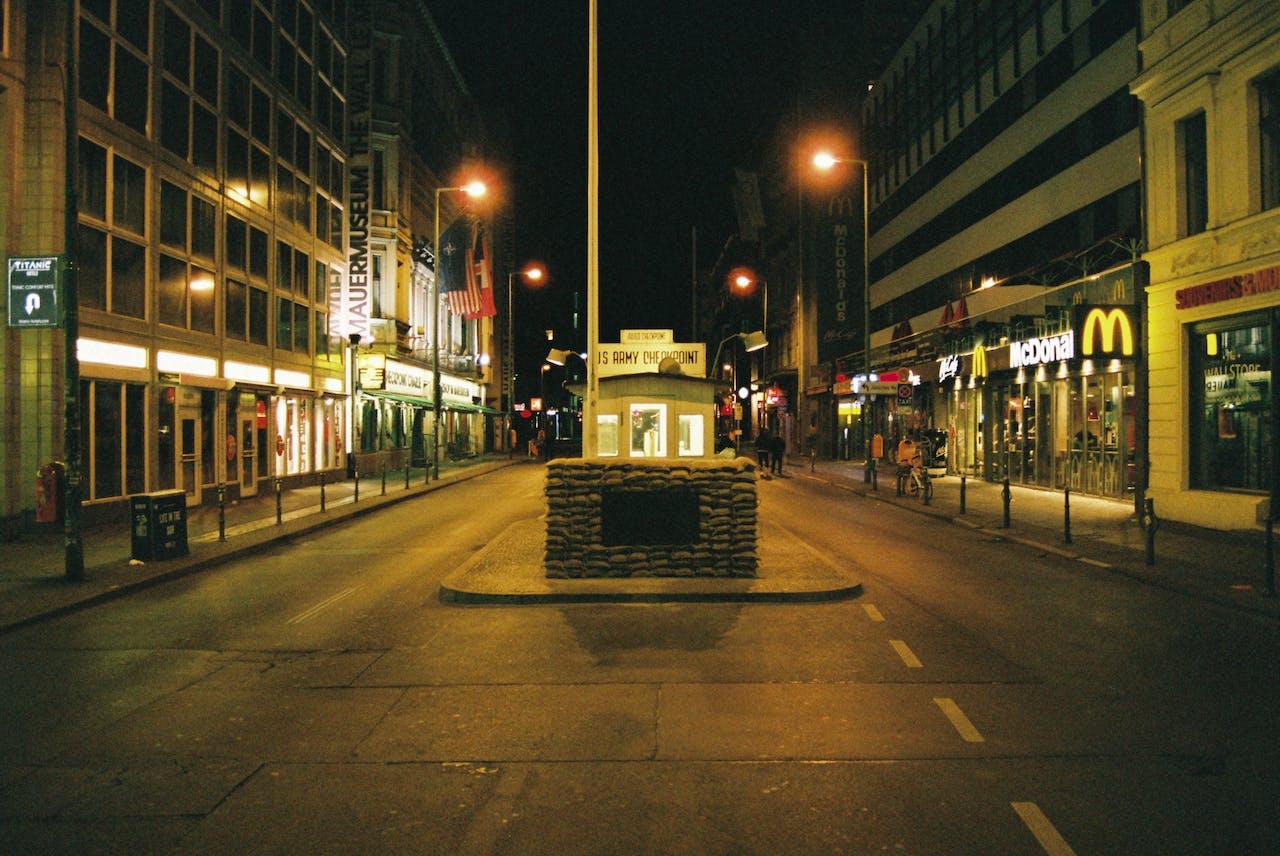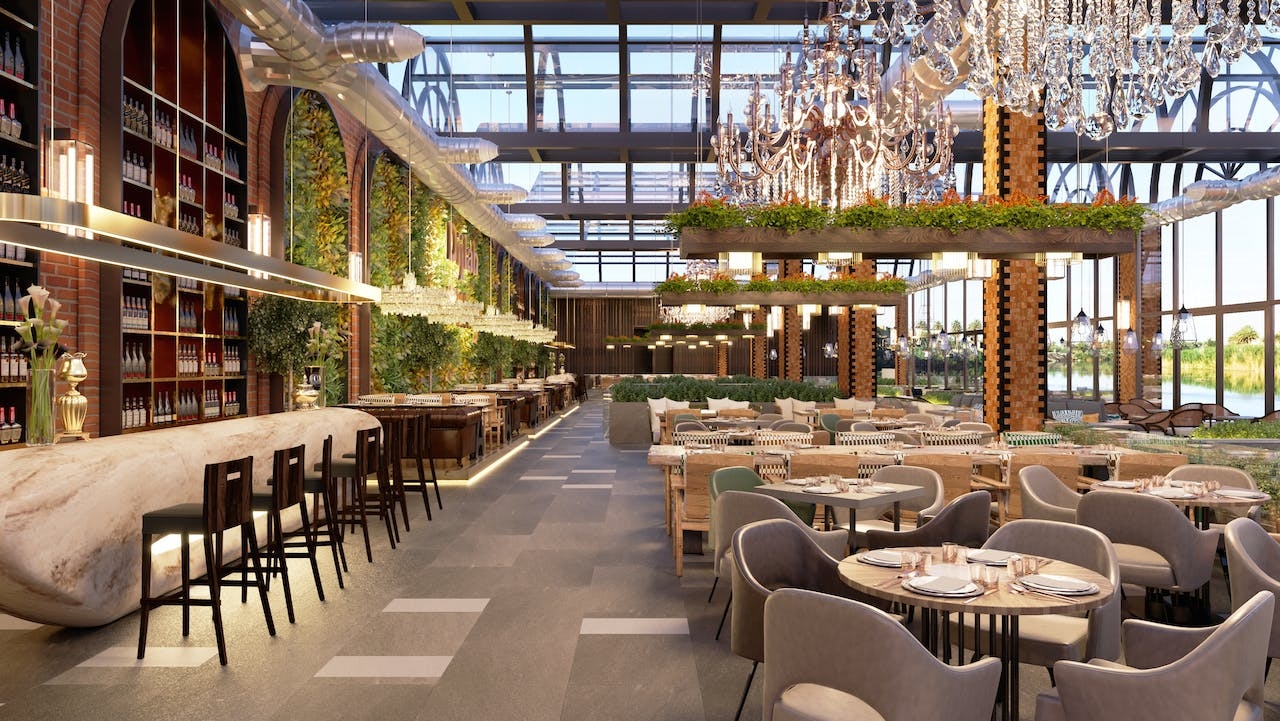Understanding Why Location is Important for Restaurant Success
By Morten Numrich · 1. February 2024
The significance of location in determining a restaurant’s success🥇 cannot be overstated.
From maximizing customer footfall to affecting operational costs, making an informed decision is key.
This article sheds light on “Why Location is Important for Restaurant”, examining its impact on various aspects of the business.
Without exaggeration or marketing fluff, we provide insights critical for restaurateurs.
Key Takeaways
- A killer location is like the secret sauce of a restaurant’s success, serving up a feast of foot traffic, visibility, and easy access that can turn a meal into a sensation.
- You’ve got to know who’s craving your culinary delights – aligning your restaurant’s location with both your target patrons and your concept is like crafting a gourmet experience that’s dressed to impress.
- Playing the long game pays off – savvy restaurateurs do their homework on rental costs, neighborhood growth, and trend forecasts to ensure their dining domain isn’t just a flash in the pan.
The Critical Role of Location in Restaurant Viability
 business street
business street
A great chef knows the balance of flavors in a dish, and similarly, a restaurant owner must comprehend the vital role of location in a restaurant’s success.
Think of your restaurant’s location as the seasoning in a dish, one that can either attract a hungry crowd or leave your establishment overlooked and forgotten.
Conducting a thorough restaurant location analysis is essential to ensure the best possible outcome for your business.
A good location can significantly reduce operating costs by drawing in more customers, enhancing sales, and trimming down marketing expenses.
Plus, it opens doors to quality food suppliers, streamlining inventory management and minimizing waste. But the magic doesn’t stop there.
A prime spot also means more potential customers, less competition, and easier access – all crucial for long-term survival in the restaurant business.
Visibility: The Beacon for Attracting Customers
Consider your restaurant a ship navigating the vast dining industry ocean.
Visibility is the lighthouse, directing hungry customers to your establishment.
A prime location that’s easy to spot from main roads can be the difference between a bustling establishment or a ghost town. Securing the best location for your restaurant is crucial for success.
High visibility amplifies your restaurant’s brand, luring foot traffic and sparking interest among passersby. Remember, a restaurant that people can see is a restaurant they are more likely to visit🔝.
Accessibility: Making It Easy for Diners
In the restaurant business, accessibility is akin to the golden crust on a gourmet pizza, enhancing the overall experience.
Ensuring that your restaurant is easy to reach and provides ample parking spaces can be a game-changer for your business.
After all, no one likes a parking nightmare when they’re heading out for a nice meal.
Convenient public transportation options or a location with plenty of parking can be a big plus, especially in bustling city centers.
And let’s not forget about the layout inside the restaurant. Easy maneuvering and a comfortable atmosphere are key for casual dining restaurants, where people come to relax and enjoy a meal.
Foot Traffic: A Stream of Potential Patrons
Foot traffic is the lifeblood of restaurants, providing a constant flow of potential customers, each offering an opportunity to increase your sales and success.
Located in an area with high foot traffic, your restaurant is more likely to attract a larger clientele, boosting your reputation and, ultimately, your bottom line.
Crafting a Restaurant Location Strategy for Target Markets
Steering your restaurant location strategy with knowledge of your target market is akin to using a compass in the wilderness.
Knowing who you serve and what they prefer can lead you to the most suitable location that will draw in the crowd you aim to impress.
But a successful restaurant location strategy doesn’t stop there. Aligning your location with your dining concept is like ensuring your shoes match your outfit.
It’s not just about aesthetics – it’s about creating a cohesive experience that resonates with your customers.
Conducting a thorough location analysis can further enhance your restaurant location strategy, ensuring long-term success.
And what about the businesses around you?
In the world of restaurant location strategy, your neighbors matter too.
Choosing a location that synergizes with surrounding businesses can contribute to a diverse and vibrant dining scene, attracting more customers and making your restaurant a part of a thriving community.
Identifying Your Target Audience
Knowing your audience is like knowing the recipe for your signature dish. The ingredients include:
- Age
- Sex
- Income
- Education
- Religion
- Race
- Location
But it’s not enough to just know who they are. You need to understand their lifestyle, their habits, and their needs.
When you understand your target audience, you can choose an ideal location that matches their preferences and needs, which can boost the likelihood of drawing in and pleasing your target audience.
Aligning Location With Dining Concept
Like a well-tailored suit, your restaurant’s location should fit its dining concept perfectly.
This means ensuring the size and layout of the space match the service style, seating capacity goals, and operational needs of your restaurant.
Whether you’re running a cozy family-friendly eatery or one of the high-end fine dining restaurants, the location should reflect the dining experience you aim to offer.
The Synergy with Surrounding Businesses
Just as a good wine pairs with the right cheese, your restaurant can benefit from being near businesses that complement your own.
Whether it’s a theater that brings in a post-show crowd or a shopping mall that attracts families looking for a convenient meal, surrounding businesses can boost foot traffic to your restaurant and help you reach a wider audience.
The Economics of Choosing the Right Restaurant Site
As a chef considers the cost of ingredients, a restaurant owner should also assess the financial implications of a potential location.
The rental costs, for instance, are a significant factor.
A high-rent area may bring in more customers, but you must ensure that the potential revenue outweighs the cost.
But it’s not just about the here and now. A smart restaurateur also considers the long-term profitability of a restaurant location.
Factors like potential growth📈 in the neighborhood and market trends can significantly impact the success of your restaurant in the long run.
Rental Costs vs. Revenue Potential
Balancing rental costs with revenue potential is like perfecting the seasoning in a dish.
The rental costs can range from $3,000 to $8,750 per month, depending on the location and concept of the restaurant. But don’t let the numbers scare you.
With a careful analysis of the potential revenue, you can ensure that your restaurant’s income will cover the rental costs and leave you with a profitable business.
Evaluating Long-Term Profitability
While it’s important to consider the immediate costs and potential revenue, a smart restaurateur also considers the long-term profitability of a restaurant location.
Factors like growth potential of the neighborhood, market trends, and even the size and seating capacity of your restaurant can significantly impact your business’s profitability in the long run.
Conducting a thorough restaurant location analysis can help you make the best decision for your business.
Navigating Local Regulations and Zoning for Restaurants
As you wouldn’t ignore health codes in the kitchen, local regulations and zoning laws should not be overlooked when selecting a restaurant location.
Complying with zoning regulations is important not just for legal reasons, but also because it can impact the kind of business you can operate and where you can operate it.
But it’s not just about zoning laws. There are also business regulations to consider, such as health and safety regulations and food handling requirements.
Navigating these regulations can be complex, but with the right resources and guidance, you can ensure your restaurant remains compliant and avoids costly fines or business disruptions.
Zoning Regulations: Can You Operate Here?
Zoning regulations are like the gatekeepers of the municipal world, determining whether your restaurant can operate in a specific area.
These laws dictate everything from the type of cuisine you can serve to the parking spaces required for your restaurant.
To ensure you’re in compliance, it’s always a good idea to consult with the local zoning board before committing to a restaurant location.
Business Regulations and Compliance
Navigating business regulations is a bit like following a complex recipe. You need to understand each step and ensure you have all the necessary ingredients.
From food safety to labor laws, complying with local business regulations is essential to keep your restaurant in good standing.
Whether you’re applying for a liquor license or ensuring your restaurant meets health and safety standards, understanding these regulations is a crucial part of running a successful restaurant.
The Impact of Competition and Market Saturation
As a good chef monitors the competition, so should a restaurant owner.
Understanding the competitive landscape can help you identify opportunities to differentiate your restaurant and stand out in a crowded market.
But there’s a flip side to competition. Too many restaurants in one area can lead to market saturation, creating a fierce battle for customers and potentially impacting your restaurant’s success.
Assessing the Competitive Landscape
To stand out in a crowded market, you need to know your competition.
Understanding their strengths and weaknesses can help you craft a unique selling proposition that sets your restaurant apart. But it’s not just about being different.
Your restaurant also needs to offer something of value to customers, whether it’s a unique dining experience, a distinctive menu, or exceptional service.
The Risks of Market Saturation
While competition can spur innovation and growth, too much of it can lead to market saturation.
When there are too many restaurants in an area, customers have more choices, and it can be harder for any single restaurant to stand out.
This can lead to lower profits and a higher chance of business failure.
So, before you set up shop in a new location, consider the level of competition and the potential for market saturation.
Designing for Success: Space Planning and the Customer Experience
 restaurant interior
restaurant interior
As a great dish needs meticulous preparation and presentation, the same care should be applied to your restaurant’s space.
The design of your restaurant can have a big impact on the customer experience, from the moment they walk through the door to the moment they leave.
Whether it’s the layout of the dining room or the setup of the kitchen, every aspect of your restaurant’s design should be carefully planned to ensure a seamless and enjoyable dining experience.
Optimizing Dining Room Layout
Creating a welcoming and functional dining room layout can enhance the dining experience and make your customers feel comfortable and cared for.
Strategic table placement, easy access to service areas, and the right ambiance can all contribute to a memorable dining experience.
But remember, it’s not just about aesthetics. The layout should also support efficient service and smooth operations.
Kitchen Space Considerations
The kitchen is the heart of your restaurant, and its design and layout are crucial for efficient operations.
From the arrangement of the cooking stations to the placement of the prep area, every inch of your kitchen should be optimized for efficiency and productivity.
And remember, a well-designed kitchen isn’t just about efficiency. It also contributes to the quality of the food and the overall dining experience.
Leveraging Location for Marketing Strategies
Your restaurant’s location serves not just as a physical place but also as a potent marketing tool.
From the visibility it provides to the foot traffic it attracts, the right location for your restaurant can enhance your marketing efforts and help attract more customers to your restaurant’s location.
Savvy restaurant owners in the restaurant industry, especially those of centrally located restaurants, can leverage their location to collaborate with nearby businesses or tap into local landmarks and tourist attractions for promotional purposes.
The Logistics of Supply and Delivery
 grocery delivery
grocery delivery
As a chef depends on fresh ingredients for a delectable dish, a restaurant leans on effective supply and delivery logistics for seamless operations.
Whether it’s maintaining a steady flow of quality ingredients from your suppliers or ensuring timely deliveries to your customers, your restaurant’s location plays a crucial role in these logistics🚚.
Proximity to suppliers, easy access for delivery trucks, and a location that’s convenient for customers can all contribute to the success of your restaurant.
Summary
As we wrap up our savory journey through the world of restaurant locations, let’s revisit the key points.
The location of a restaurant, much like the secret ingredient in a gourmet dish, plays a crucial role in its success.
It’s an intricate blend of visibility, accessibility, foot traffic, market understanding, financial considerations, regulatory compliance, competition analysis, and thoughtful design.
Choosing the right location for your restaurant is not just about finding a spot on the map.
It’s about understanding your target market, aligning your location with your dining concept, navigating local regulations, and designing a space that enhances the customer experience.
So, as you embark on your restaurant journey, remember: location is not just a place. It’s an ingredient for success.

